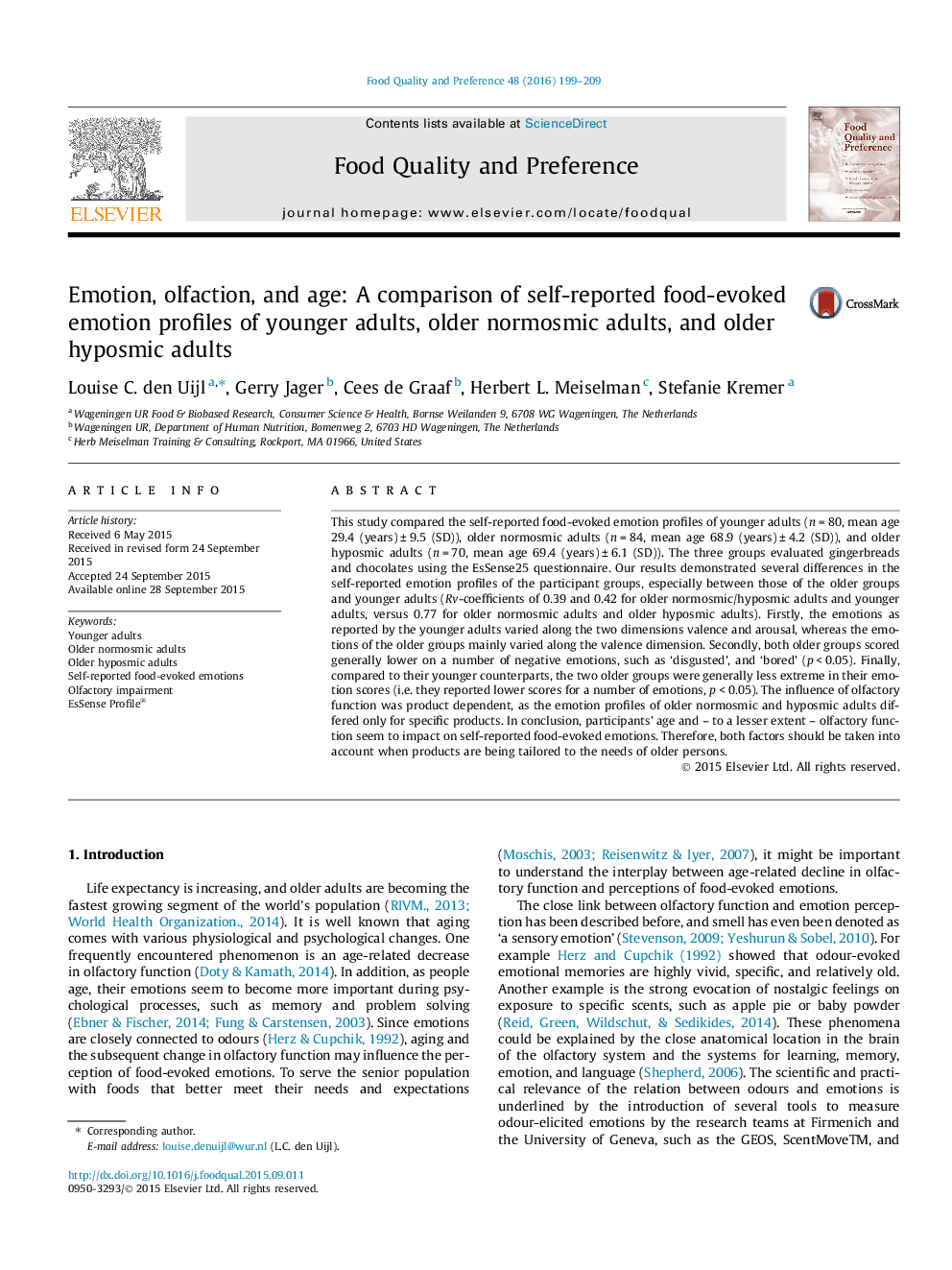| کد مقاله | کد نشریه | سال انتشار | مقاله انگلیسی | نسخه تمام متن |
|---|---|---|---|---|
| 6261207 | 1290566 | 2016 | 11 صفحه PDF | دانلود رایگان |
- We compared food-evoked emotions of adults (younger/older normosmic/older hyposmic).
- The emotions as reported by the younger adults varied in valence and arousal.
- The emotions as reported by the older groups mainly varied in valence.
- Both older adults reported negative food-evoked emotions with lower intensities.
- Age and olfactory function seem to impact food-evoked emotion profiles.
This study compared the self-reported food-evoked emotion profiles of younger adults (n = 80, mean age 29.4 (years) ± 9.5 (SD)), older normosmic adults (n = 84, mean age 68.9 (years) ± 4.2 (SD)), and older hyposmic adults (n = 70, mean age 69.4 (years) ± 6.1 (SD)). The three groups evaluated gingerbreads and chocolates using the EsSense25 questionnaire. Our results demonstrated several differences in the self-reported emotion profiles of the participant groups, especially between those of the older groups and younger adults (Rv-coefficients of 0.39 and 0.42 for older normosmic/hyposmic adults and younger adults, versus 0.77 for older normosmic adults and older hyposmic adults). Firstly, the emotions as reported by the younger adults varied along the two dimensions valence and arousal, whereas the emotions of the older groups mainly varied along the valence dimension. Secondly, both older groups scored generally lower on a number of negative emotions, such as 'disgusted', and 'bored' (p < 0.05). Finally, compared to their younger counterparts, the two older groups were generally less extreme in their emotion scores (i.e. they reported lower scores for a number of emotions, p < 0.05). The influence of olfactory function was product dependent, as the emotion profiles of older normosmic and hyposmic adults differed only for specific products. In conclusion, participants' age and - to a lesser extent - olfactory function seem to impact on self-reported food-evoked emotions. Therefore, both factors should be taken into account when products are being tailored to the needs of older persons.
Journal: Food Quality and Preference - Volume 48, Part A, March 2016, Pages 199-209
